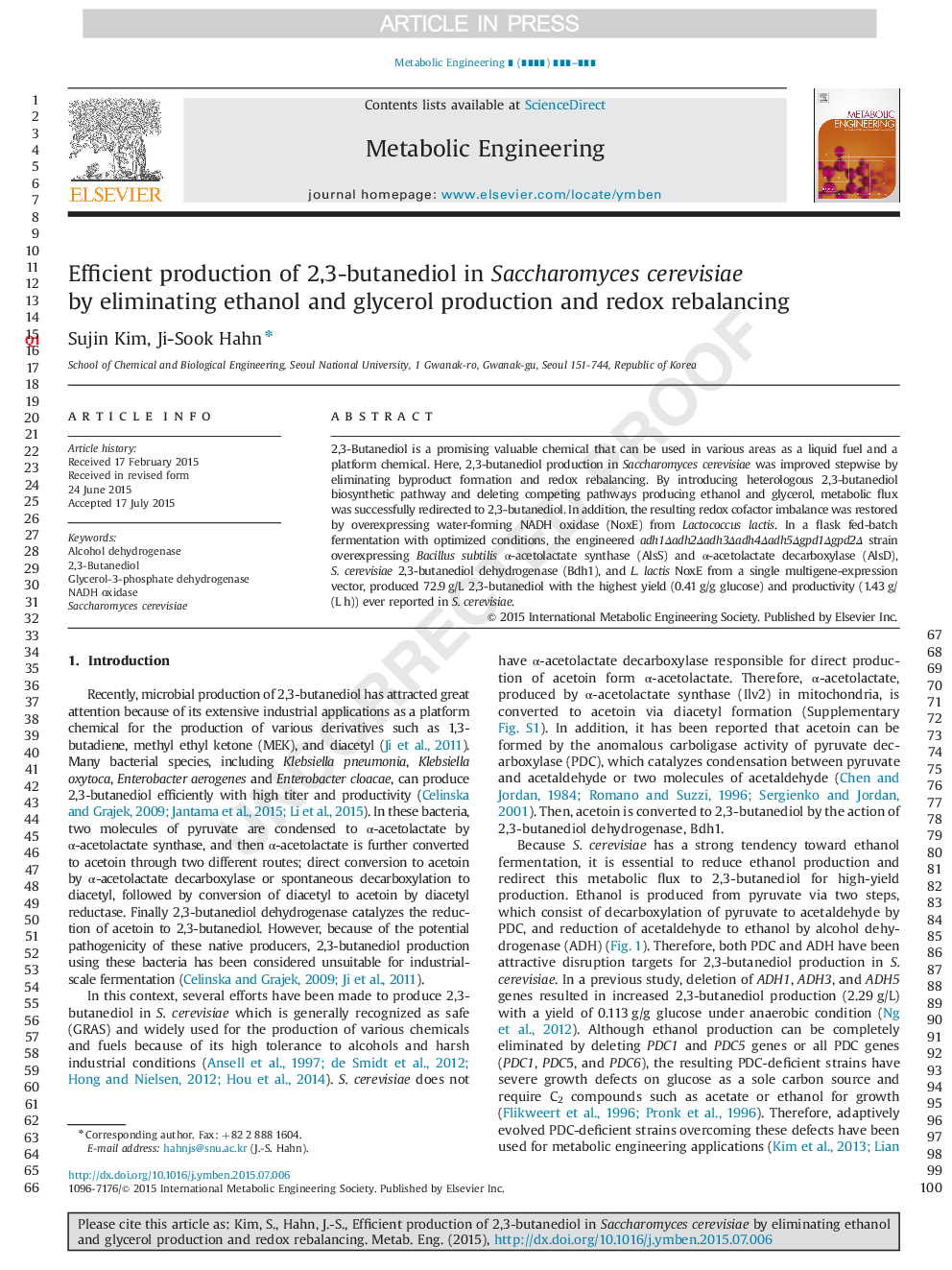| Article ID | Journal | Published Year | Pages | File Type |
|---|---|---|---|---|
| 6494356 | Metabolic Engineering | 2015 | 7 Pages |
Abstract
2,3-Butanediol is a promising valuable chemical that can be used in various areas as a liquid fuel and a platform chemical. Here, 2,3-butanediol production in Saccharomyces cerevisiae was improved stepwise by eliminating byproduct formation and redox rebalancing. By introducing heterologous 2,3-butanediol biosynthetic pathway and deleting competing pathways producing ethanol and glycerol, metabolic flux was successfully redirected to 2,3-butanediol. In addition, the resulting redox cofactor imbalance was restored by overexpressing water-forming NADH oxidase (NoxE) from Lactococcus lactis. In a flask fed-batch fermentation with optimized conditions, the engineered adh1Îadh2Îadh3Îadh4Îadh5Îgpd1Îgpd2Î strain overexpressing Bacillus subtilis α-acetolactate synthase (AlsS) and α-acetolactate decarboxylase (AlsD), S. cerevisiae 2,3-butanediol dehydrogenase (Bdh1), and L. lactis NoxE from a single multigene-expression vector produced 72.9 g/L 2,3-butanediol with the highest yield (0.41 g/g glucose) and productivity (1.43 g/(L·h)) ever reported in S. cerevisiae.
Keywords
Related Topics
Physical Sciences and Engineering
Chemical Engineering
Bioengineering
Authors
Sujin Kim, Ji-Sook Hahn,
